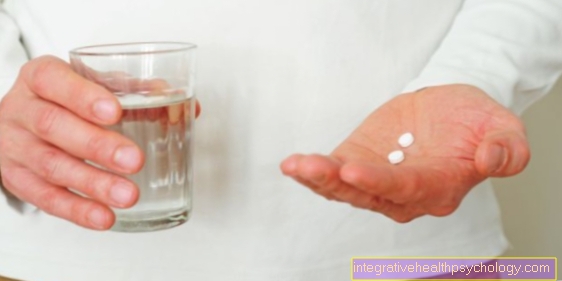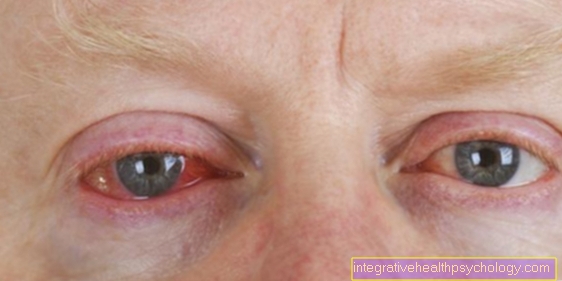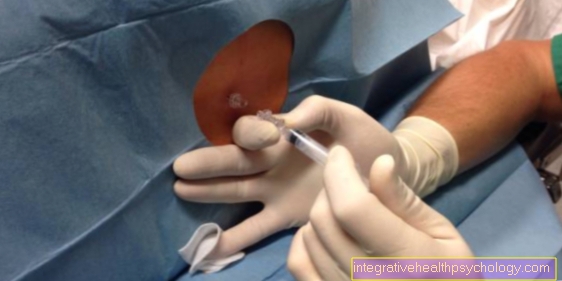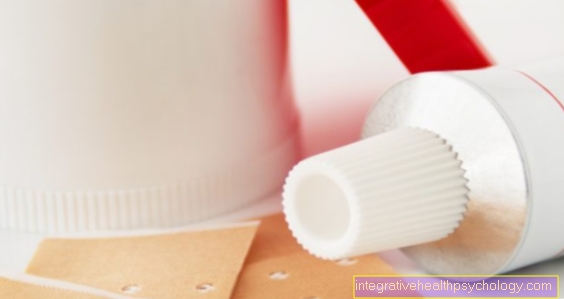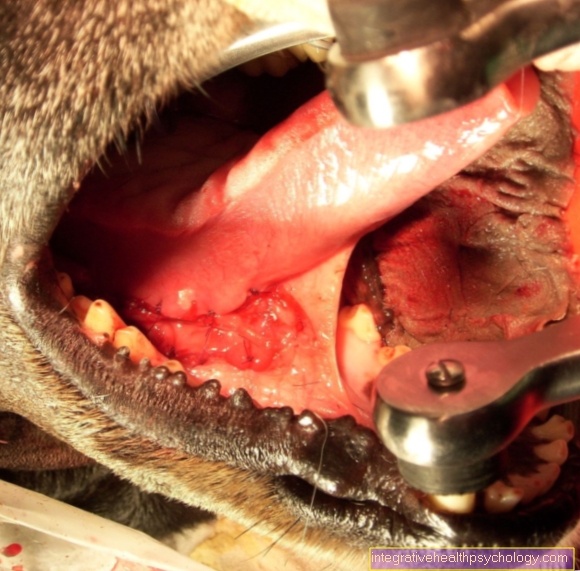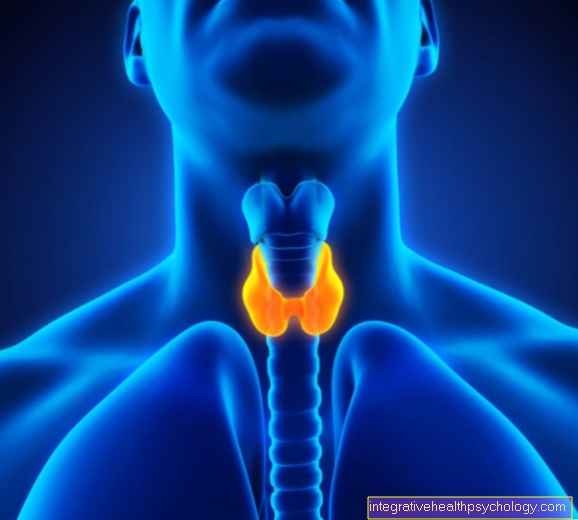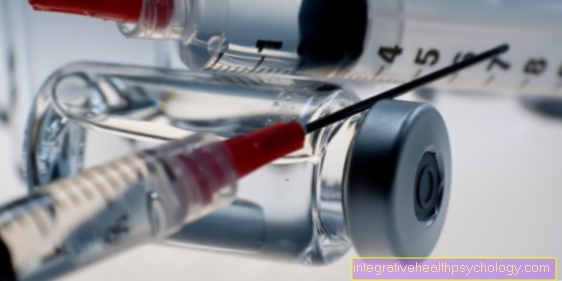Kallikrein
What is kallikrein?
Kallikrein is an enzyme that can break down certain hormones. The resulting hormones are called kinins. The hormones are activated by this split. Kallikrein splits their precursors, which are called kininogens.
Through this function, it is involved in various processes in the body. It occurs in various forms in the blood and in all tissues in the body.
Important functions in which kallikrein is involved are blood clotting and the regulation of blood pressure.
Kallikrein is a so-called serine protease and, like all enzymes and proteins, is made up of amino acids. The word protease means that this enzyme can break down proteins. Serine is an amino acid and is located in the active center of kallikrein, i.e. the point on the enzyme where the cleavage reaction takes place.

Function and effect of kallikrein
With kallikrein, a distinction is made between the form that can be found in the blood and the form that occurs in various tissues of the body.
Kallikrein in the blood
The kallikrein in the blood plays an important role in blood clotting and the regulation of blood pressure.
However, kallikrein does not cause blood to clot. Rather, it acts as one of the substances that ensures that blood clots are dissolved again. This process is very important, otherwise the blood would clot for no reason. This would be fatal as blood clots would lead to strokes or other serious illnesses. It can do this by activating a protein that causes blood clots to dissolve.
The coagulation system is a very complex system consisting of many components. The kallikrein, which is in the blood, is activated by one of the components of the coagulation system, the so-called Hagemann factor or factor XII. This activation is due to the fact that factor XII, also an enzyme, produces the active kallikrein from the precursor of kallikrein, prekallikrein. This process is permanent to a small extent. The reason for this is the function of kallikrein in blood clotting. Kallikrein activates a substance that dissolves blood clots. This substance is called plasmin. Plasmin is an enzyme that breaks the bonds in a blood clot. This ensures that the blood remains fluid and does not clot for no reason.
Learn more about the Blood clotting.
The role of kallikrein in regulating blood pressure can be explained by the fact that kallikrein, which is found in the blood, produces kinins. These kinins, which form a group to which several hormones belong, cause the vessels to dilate and thus lower blood pressure. However, kinins are also involved in activating inflammation.
Read everything about the topic Blood pressure.
Kallikrein in tissue
The form of kallikrein, found in various tissues in the body, is involved in a wide variety of processes.
Some forms in the prostate cause the seminal fluid to liquefy. Failure to do this can result in sterility.
Another function of various forms of kallikrein is to exfoliate the skin. The skin is subject to constant regeneration and peeling. The skin cells are connected to one another by various proteins, so-called adherence molecules. These are split by kallikrein. This makes it possible for skin cells to be detached from the composite and for peeling to take place.
The kallikrein, which is located in the tissue, also partly contributes to the complex system of blood coagulation and clotting.
Where is Kallikrein made?
As already mentioned, a distinction is made between tissue kallikrein and the kallikrein that circulates in the blood, the plasma kallikrein.
Tissue kallikrein is produced in the various tissues in which they perform their function. In addition to the skin and the prostate, this also includes the pancreas and salivary glands.
Plasma kallikrein, on the other hand, is produced in the liver. In addition to its important detoxification function, the liver is an extremely important producer of countless enzymes and hormones. After the kallikrein is produced in the liver, it is released into the blood and then circulates in the bloodstream.
What is the kallikrein kinin system?
The kallikrein kinin system is a complex system consisting of enzymes, proteins and polypeptides.
Like proteins, polypeptides are made up of amino acids. However, they consist of a smaller number of amino acid building blocks.
The interaction between the components of the kallikrein-kinin system is very complex and has not been fully explored. The kinins, which are eponymous next to the kallikrein, are called bradykinin and kallidin. Kallikrein cuts the precursors of these hormones, creating the active forms.
The effect of the Kinins is briefly summarized:
- Expansion of the vessels
- Initiation of inflammation
- Increasing the permeability of vessels
- Triggering pain
- Promote blood clotting in damaged blood vessels
- Dissolve blood clots if the blood vessels are intact
What is a kallikrein inhibitor?
In general, an inhibitor is a substance that inhibits an enzyme in different ways. This inhibition results in the product of the enzyme being produced to a lesser extent or no longer being produced.
In the case of kallikrein, the inhibition, or inhibition, no longer produces as many kinins. Because there are fewer kinins, the effect of the kinins is weakened.
Kinins are, among other substances, necessary for triggering an inflammatory reaction. Inflammation causes reddening and warming, both caused by widening of the blood vessels. In addition, the blood vessels become more permeable and water can enter the tissue. A swelling develops. This swelling is also called edema. In addition, the substances involved cause pain.
In the case of a genetic disease, hereditary angioedema, it is very important to stop these processes. Hereditary means congenital and angioedema means that there is a swelling that originates from the blood vessels. This disease causes painful swellings in different parts of the body. It is particularly dangerous when the airways are affected.
So a kallikrein inhibitor is given along with other drugs to reduce swelling and relieve symptoms.



